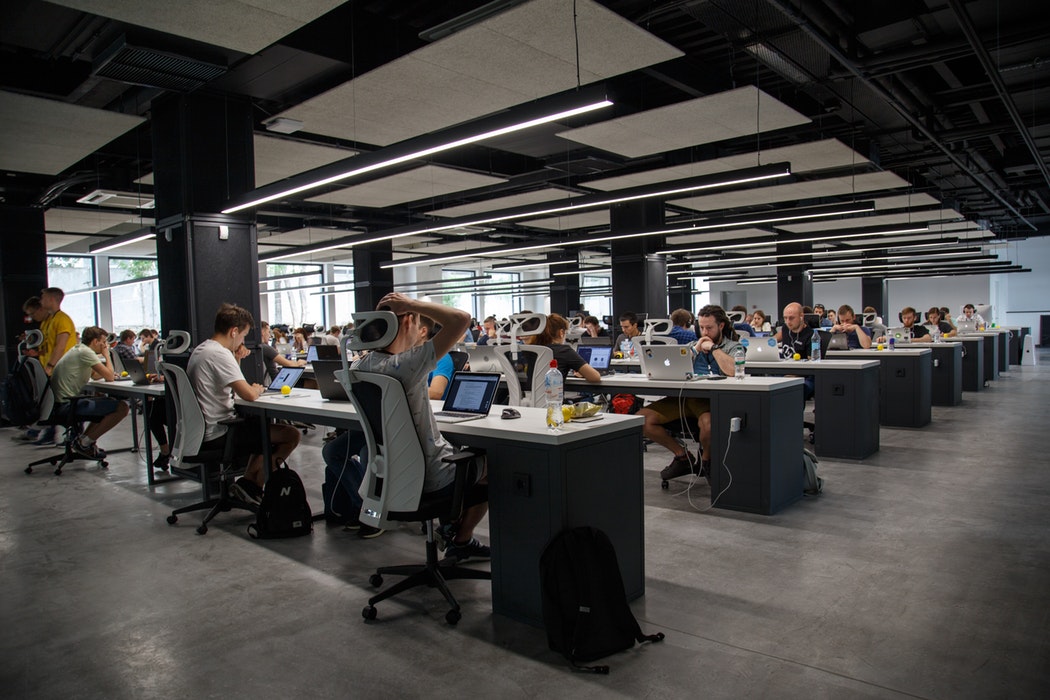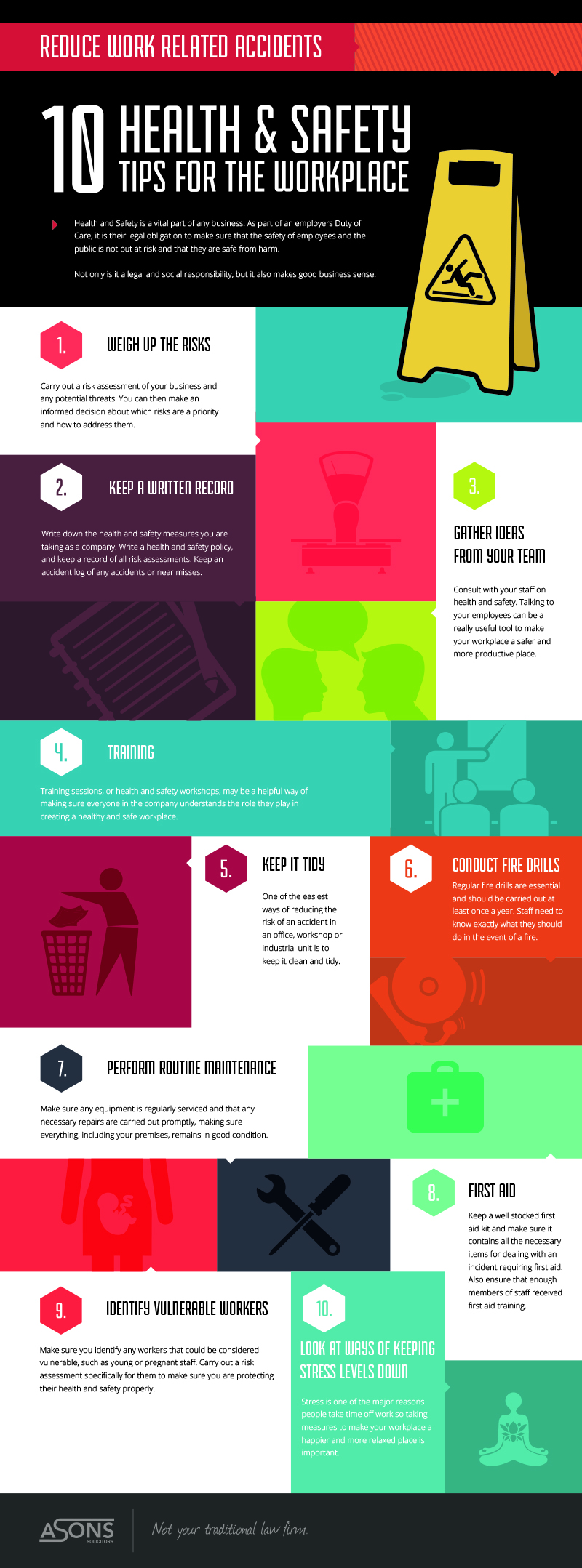There are many benefits to having a safe work environment. Not only does it prevent employees from getting injured, it boosts productivity and efficiency as well. People work better and produce higher results when they are comfortable in their surroundings and when they don’t need to worry about various threats or dangers.
Creating a workplace safety checklist is the first step you should take to ensure that your business is safe. Identify potential hazards and share solutions or procedures that detail how to handle these issues with your employees. Start crafting your list now.
A Few Things to Remember
Before you get started, there are a few things that you should keep in mind.
- Read and learn about the health and safety regulations that apply to your state and industry. You can find information by state here.
- Keep an organized and accessible binder of regulations that your employees can access at all times.
- Include health and safety checklists in the binder mentioned above.
- If there are any emergency procedures that your employees need to know, have them read it during their on-boarding process. Regularly review these procedures as needed.
- Stay accessible for any questions or concerns that your employees may have regarding the company’s safety standards.
Top 8 Things You Should Have in Your Workplace Safety Checklist
- Keep the Floors Clear. You should have clear walkways at all times. Your employees shouldn’t struggle to get from one place to the other. If your organization constantly receives packages or boxes, be sure to have a designated area for them. Inform your employees to immediately clean up any spills or leaks that may happen. If you work in an industry that works with oils, be sure to educate your employees on how to properly clean and dispose of that.
- Keep the Stairs Clear. Similarly to your floors, your stairs should always be clear. A crowded stairwell could cause accidents or prevent employees from being able to exit in the event of an emergency. Your stairwells should also be properly lit and have a handrail installed.
- Install Proper Lighting. Whether you’re working on a construction site or in an office, it is imperative to have good lighting. Most employees feel safer in brightly lit areas. Having good light will also prevent falls and other accidents from taking place. Your outdoor parking area should also have good lighting to keep employees safe when getting to their car.
- Require the Proper Dress Code. Wearing the right attire could prevent someone from getting seriously injured. If you are working in the construction industry, require your workers to wear steel-toed boots and shoes. They should also be the proper sizing. If you are working in the food industry, make sure to note that the kitchen staff should wear long sleeves and pants to prevent burns. They should also invest in non-slip shoes.
- First-Aid Kits. Buy or create first-aid kits for your offices. Depending on how big your work environment is, you may need multiple kits. Each kit should have things to help wrap up cuts and scrapes, as well as, ointment to prevent infections.
- Emergency Procedures. Email your employees important emergency procedures. You should also keep a set of the posted and accessible at all times. Your emergency exits should all be clearly marked. You should also inform your employees where the emergency equipment, like fire extinguishers, are housed in the office.
- Keep the Office Clean. Make a conscious effort to keep the office as clean as possible. This doesn’t just mean tidy. This means keeping it clear of food, waste, and more. Not emptying out your trash frequently could cause insects and other critters to come into the building. The last thing you or your employees want is an unwelcome rodent infestation. You should also make sure that the bathrooms are cleaned daily.
- Lock All Doors & Windows When Leaving. Your office or work environment should be secure at all times. In your safety checklist, provide a “closing office” checklist as well. Instruct your employees on how they should close down the office when the day is over. It is especially important to lock all your doors and windows so that none of your equipment gets taken or stolen. If your windows have blinds, they should be drawn closed so that people don’t see the valuables that you have.
Getting injured at work is not entirely preventable, but there are definitely steps you can take to decrease the chances of it happening. Follow these 8 tips and take the first stride to make your environment a safer one.
To learn more about what you can do if you were to get injured at work, speak to a workers compensation attorney.
 Every workplace needs to be protected from such occurrences. Something as small as a fire ant can cause a lot of damage and put your employees at great risk. The worksites with birdbaths, buckets of water, old tires, clogged gutters, and other outdoor equipment are at a much higher risk that indoor workspaces. However, the risk is still present everywhere.
Every workplace needs to be protected from such occurrences. Something as small as a fire ant can cause a lot of damage and put your employees at great risk. The worksites with birdbaths, buckets of water, old tires, clogged gutters, and other outdoor equipment are at a much higher risk that indoor workspaces. However, the risk is still present everywhere. As a good employer, you want to protect your workers from diseases spread from insect bites, as well as complications that arise as a result of allergies, bacteria, viruses and parasites. The West Nile virus infection is just one of the many, since infected mosquitoes and ticks can carry anything from bacteria to Lyme disease. Statistics say that in a period of nine years between 2001 and 2010, an
As a good employer, you want to protect your workers from diseases spread from insect bites, as well as complications that arise as a result of allergies, bacteria, viruses and parasites. The West Nile virus infection is just one of the many, since infected mosquitoes and ticks can carry anything from bacteria to Lyme disease. Statistics say that in a period of nine years between 2001 and 2010, an  Scott Mathews is a professional content writer at recruiting, HR management and work productivity. Scott`s biggest passion is blogging and travelling. He regularly takes part in different conferences and contributes his posts to different websites. Contact him on
Scott Mathews is a professional content writer at recruiting, HR management and work productivity. Scott`s biggest passion is blogging and travelling. He regularly takes part in different conferences and contributes his posts to different websites. Contact him on 
